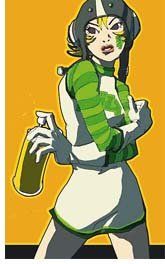Why the Dreamcast was different
We break down why Sega's doomed system is the industry's most beloved cult console
Following the Dreamcast’s brilliant launch, Sega retrenched and restructured its internal development teams, carving them up into 10 separate studios with names like Hitmaker, Smilebit and Overworks. These studios operated more or less autonomously from Sega, and as a result they were given an unprecedented amount of freedom to experiment with radical and bizarre game ideas. In an industry in which developers are routinely encouraged to churn out more of the same because it’s perceived as a safe investment, Sega’s studios instead let their creativity run wild, and the results of their efforts are some of the weirdest, most wonderful and most fondly remembered games of all time.

“The system was able to go off the rails with some seriously blissed-out, wacked-out shit, as well as kickstarting some incredibly solid series – Shenmue, the 2K Sports stuff, Phantasy Star Online, etc.,” said Reyes. “It was also one of the last systems to truly champion creative, in-house studio talent like Tetsuya Mizuguchi and Yu Suzuki. I don’t know how to explain it, but Dreamcast, in my mind, was the last gasp of true creative, innovative freedom with no ties to pie charts and sales graphs.
“It really, truly felt like game creators were exactly that — creators. Yeah, it’s probably my romantic, idealized version of what was actually, really going on — which in reality was most likely a bunch of Japanese businessmen sweating and yelling around a table in some boardroom about how much money they were losing,” Reyes said.
Some of the games that came out of this anything-goes environment were relatively conventional fare with fun twists, like air-pirate RPG Skies of Arcadia and weirdly lifeless shooter Outtrigger. But what’s perhaps best remembered are the edgier games – like the high-speed, Offspring-infused Crazy Taxi and the brilliant, cel-shaded skatepunk epic Jet Grind Radio – and the completely bizarre ones. This latter category included everything from spectacular music games like Space Channel 5 and Samba de Amigo, to the grotesque-but-captivating virtual-pet sim Seaman and the gruesomely educational Typing of the Dead.

Above: Seaman’s big draw was the inclusion of a microphone through which you could hold conversations with that… thing. It also puts all cuddlier virtual pets to shame
Meanwhile, a few of the games to come out of this period were actually ground-breaking. Shenmue set a new high-water mark for virtual worlds and sandbox storytelling, Phantasy Star Online became the first-ever console MMO (and the first serious addiction for scores of Dreamcast owners) and Rez, divisive as it still is, pushed the limits of in-game graphics while seeming to pull them back with its strikingly minimalist presentation.
Conventional or crazy, disturbing or merely weird, these games all had one thing in common: no matter how strange they got, they were all a complete blast to play. Sega’s internal devs weren’t afraid to experiment, but they also knew their first priority was to create a fun game, and with a few exceptions, they proved to be experts at it. And even when their efforts fell short (like in the middling Zombie Revenge), the results were at least unique.
Sign up to the 12DOVE Newsletter
Weekly digests, tales from the communities you love, and more

Above: Meh, at least they tried
The mood was apparently infectious enough that a few third-party publishers got in on the act. Most notable among them was Capcom, which – in addition to bringing high-profile games like Resident Evil: Code Veronica, Street Fighter III and Marvel vs Capcom to the table - used the Dreamcast as a proving ground for its newer, stranger properties. The results include the classic Power Stone games, as well as lesser-known gems like Tech Romancer and Project Justice, all of which went a long way toward making the Dreamcast a Mecca for hardcore fighting fans.
It wasn’t until the Dreamcast’s final days that the really weird stuff started showing up, though; in the months that followed Sega officially pulling the plug on the game, a torrent of strange, seemingly half-baked games crowded their way into the Dreamcast’s final moments. Leading the charge was 2K Sports developer Visual Concepts, which finally brought its long-delayed adventure Floigan Bros. (ironically titled “Episode 1”) to market alongside the fantastic online party game Ooga Booga and Sega’s own tanks-vs-giant-crabs shooter, Alien Front Online. This period also saw the release of the great – and, sadly, ignored – Bomberman Online, probably the best iteration of the franchise since the 10-player Saturn Bomberman a few years earlier.

Above: Seriously – wicked awesome
Of course, the party couldn’t last, and once the PlayStation 2 had demonstrated that it meant business – and that its built-in DVD player, which the Dreamcast lacked, could move units like crazy – Sega decided to throw in the towel and exit the hardware business in March, 2001. After a year of brilliant releases, the last-ever game to be released for the Dreamcast in North America – NHL 2K2 – hit stores the following February. And for any other system, that would have been that.
Most Popular


